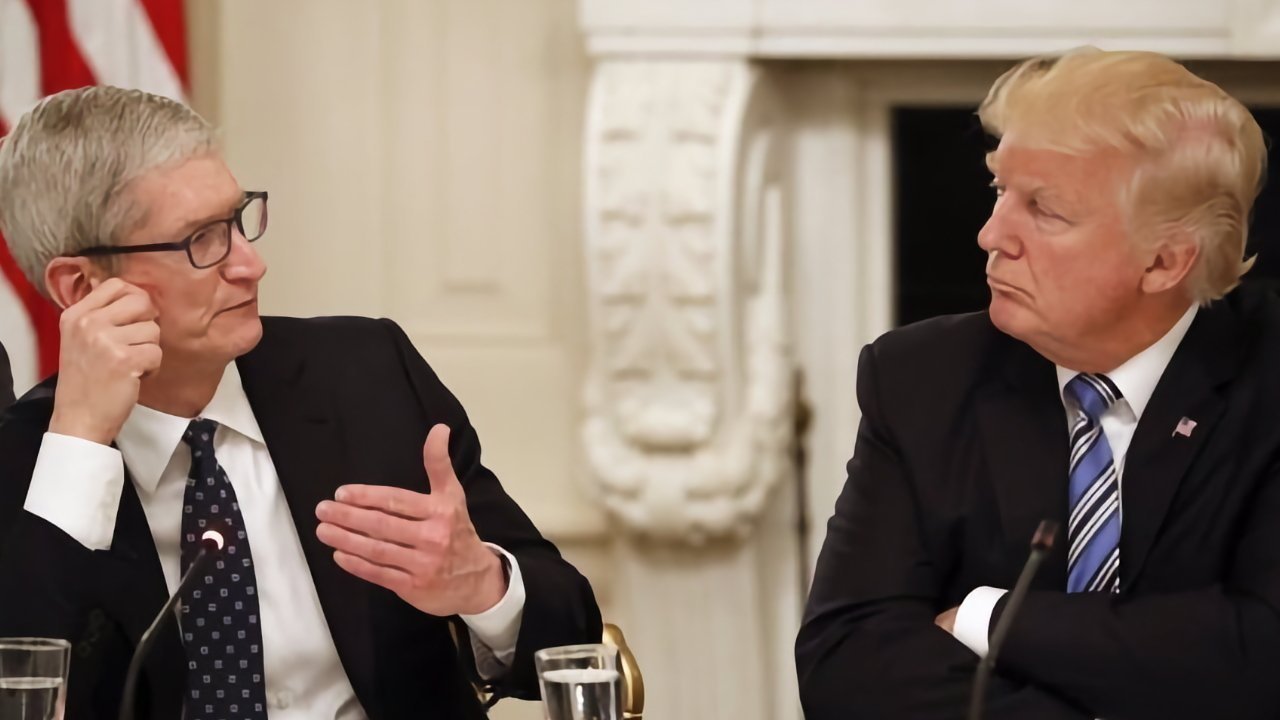Tim Cook [left]President Donald Trump [right]

President Donald Trump has started to send letters to world leaders announcing new tariff rates for countries without a U.S. trade deal, some of which affect countries where Apple manufactures its products.
In April, President Donald Trump introduced a 90-day pause on tariffs, so that his administration could work out new trade deals with countries around the world. While that original pause was originally due to end on July 8, Trump is preparing to instigate new tariff rates for countries that failed to make a deal.
Letters published to social mediaon Monday by the President now outline new tariffs that will be applied to select countries, with each sent to their respective leaders. The letters follow the same format, explaining that there will be new tariffs applied to each country from August 1.
The initial list of countries with tariffs includes 25% applied against Japan, South Korea, Malaysia, and Kazakhstan. Reuters reports a 30% tariff was issued on South Africa, and 40% on Laos and Myanmar.
Outside of its production in China and Vietnam, Apple has production or sourcing from suppliers based in Japan, South Korea, Kazakhstan, and South Africa, among the already-announced tariff changes.
Fearful of a similar situation to the tit-for-tat tariff rises with China, the letters also include language to try and prevent that from happening.
“If for any reason you decide to raise your Tariffs, then, whatever the number you choose to raise them by, will be added onto the 25% that we charge,” Trump writes in the Japan and South Korea letters.
A total of 12 letters are expected.
Reciprocal tariffs to cost Apple dearly
It is, so far, unclear what will happen to other countries that do not have trade deals. At a minimum, the 10% “pause” rate will be applied, but it is entirely possible for a return to pre-pause tariff rates.
So far, Trump has signed trade deals with China and Vietnam, though both are not exactly great for consumers. For China, Trump said in June that the deal would see the U.S. “getting a total of 55% tariffs,” which is better than the triple-digit rate before, but still hefty.
Meanwhile for Vietnam, the trade deal will see Apple paying at least five times more in tariffs than before the tariff battle began.
Other countries are still trying to make their own deals with the U.S., with mixed results. For example, the U.K. managed to secure parts of a trade deal to reduce tariffs on cars being shipped to the U.S. in June, but a 10% levy on most goods was not addressed, nor an expected removal of charges on steel imports.
For Apple, Monday’s list of tariff letters means it faces even more costs than it did before April’s omnibus announcement for importing goods in the future.
Apple is already expecting to feel the pinch from tariffs in the current financial quarter. The company has warned that the tariffs will cost approximately $900 million in the period.
That’s beside its high-cost adjustments to its global distribution and production system to minimize the impact of tariffs.
While Apple won’t truly know how much the tariffs will cost its balance sheet for the September quarter just yet, it’s likely to be yet another expensive exercise at the hands of Trump.

